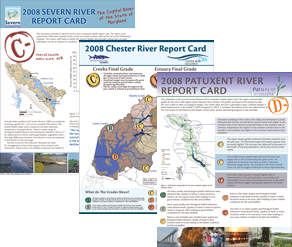Citizen Science Programs
Bill Dennison ·Environmental monitoring is extremely expensive with recurring costs. In addition to supporting a field effort, the analytical costs of processing samples and the data entry, quality assurance and analyses incurs costs. Even if the labor intensive field sampling is reduced through remote sensors and automated sampling, the task of processing the data is not diminished. In fact, the increased data gathering capacity of more and better sensors has made the task of data analysis even more important. The other factor influencing environmental monitoring is that the various governmental agencies tasked with monitoring are generally working with reduced budgets. There is little likelihood that monitoring support from agencies will increase, yet the need to provide timely feedback on effectiveness of management actions will only increase. As a result of the these factors, an important emerging trend in environmental monitoring is the use of citizen scientists to create new monitoring programs or augment existing monitoring programs.
Government agency monitoring is typically quality assured and good at providing broad spatial coverage and long term temporal trends. However, rapid responses in small regions are not well captured by agency monitoring, even though this is the scale necessary to detect changes that could inform management in an adaptive framework. This monitoring gap is where organized groups of citizen scientists can significantly contribute to the overall monitoring effort. Examples of how the efforts of citizen scientists can be coordinated include water quality sampling by riverkeeper or waterkeeper groups, plant and animal inventories through the National Park Service’s ‘Bio-Blitz’, low tide benthic assessments through the Seagrass Watch program, or bird surveys conducted during Audabon’s Christmas counts, just to name a few. These citizen science efforts require coordination and training, quality control mechanisms to insure good data, and data storage and analysis capability. Thus, the ‘free labor’ provided by citizen scientists must be accompanied by resources from either government agencies, non-government organizations or foundations.
There are several advantages to conducting citizen science.
- The engagement of citizen scientists in a monitoring effort, supported by resources from other entities, reduces the disconnect people have with ecosystem management. These engaged citizens are then empowered to say “This is not right” if they observe something that is happening and they are likely to directly act to fix what they perceive as wrong.
- Citizen scientist monitoring gets people outside in the ecosystem, looking at it, experiencing it and being part of it. Technological advances have made it increasingly comfortable to stay indoors; central heat/air conditioning, multiple television stations and internet streaming entertainment continually. Why experience nature yourself when you can watch nature shows on television? Regular field trips to conduct monitoring can help.
- An informed citizenry can be effective at shaping local governmental decisions (e.g., zoning board decision, town council meetings). Citizen scientists become a powerful voice because they have first hand knowledge, backed up by their participation in an organized program with quality assurances, giving them increased credibility.
- Citizen scientists are participating in lifelong learning, whether it be part of a high school class project or retirees participating in the program, they are learning about sampling techniques, data analyses and science communication. In addition, they gain an appreciation about complex issues like climate change or land use alteration.
- Citizen scientists provide a fresh set of eyes in the ecosystem. They become an early warning system for events that are occurring, such as arrival of exotic species, changes in water quality, or other ecological transitions. Thus citizen scientists can serve as sentinels.
For all of the above reasons, the Integration and Application Network is committed to working with a network of citizen scientist groups around the Chesapeake region to provide them the scientific tools, data analysis rigor and communication avenues to empower them to create and build robust monitoring programs.
About the author
Bill Dennison

Dr. Bill Dennison is a Professor of Marine Science and Vice President for Science Application at the University of Maryland Center for Environmental Science.


